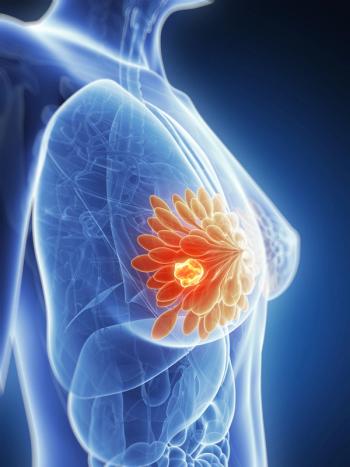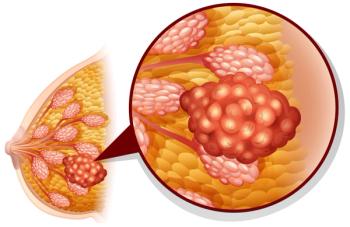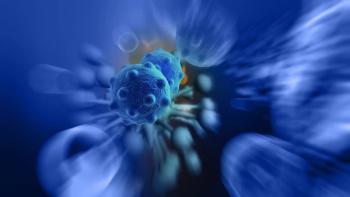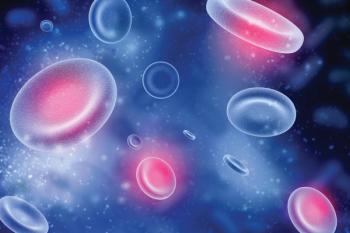
Daratumumab Plus CyBorD Followed by Daratumumab Maintenance Achieves Deep Responses for Multiple Myeloma
An end-of-study analysis of the LYRA trial found that patients with treatment-naïve and relapsed multiple myeloma achieved durable responses to daratumumab plus CyBorD induction followed by daratumumab maintenance therapy.
For patients with newly diagnosed or relapsed multiple myeloma, regardless of transplant status, daratumumab (Darzalex) plus cyclophosphamide, bortezomib, and dexamethasone (CyBorD) induction followed by daratumumab maintenance therapy achieved durable and deep responses, according to data from the LYRA trial (NCT02951819) presented at the 2021 European Hematology Association (EHA) Congress.
The multicenter, single-arm, phase 2 study also produced a safety profile consistent with previously reported data on daratumumab plus CyBorD followed by daratumumab maintenance therapy.
“Daratumumab plus CyBorD induction followed by monthly daratumumab monotherapy maintenance attained deep and durable responses in patients with newly diagnosed or relapsed myeloma,” Robert M. Rifkin, MD, FACP, of the US Oncology Research Network, Rocky Mountains Cancer Centers, in Denver, Colorado, said in his presentation of the data. “The estimated 3-year progression-free survival rate was approximately 70% in newly diagnosed patients, regardless of transplant status.”
A total of 101 patients were enrolled in the study, of whom 86 had newly diagnosed and 14 had relapsed multiple myeloma receiving at least 1 dose of the study treatment. Median follow-up durations were 35.7 months for patients with newly diagnosed and 35.3 months for patients with relapsed multiple myeloma.
At the end-of-study analysis, the overall response rates (ORRs) were 97% in newly diagnosed patients who received a transplant, 83% in newly diagnosed patients who did not receive a transplant, and 86% in relapsed multiple myeloma.
Focusing on newly diagnosed patients with multiple myeloma, those who received autologous stem cell transplant (ASCT) had a very good partial response (VGFR) or better rate of 82.1% and a complete response (CR) or better rate of 48.7% at the end-of-study analysis. For newly diagnosed patients who did not receive a transplant, those rates were 70.2% and 29.8%, respectively.
Patients with relapsed multiple myeloma had a VGPR or better rate of 71.4% by the end of the study, with a CR or better rate of 64.3%.
For newly diagnosed patients regardless of transplant status, the median progression-free survival (PFS) was not reached but estimated rates at 36 months were 69.3% and 72.6% for transplant and non-transplant cases, respectively. The median PFS for patients with relapsed multiple myeloma was 21.7 months.
While median overall survival (OS) rates were not met in any groups, the estimated 36-month OS rates were 94.9%, 84.3% and 50.0% for newly diagnosed patients who received transplant, newly diagnosed patients who did not receive transplant, and patients with relapsed disease, respectively.
Treatment-emergent adverse events (TEAEs) occurring in at least 25% of patients included fatigue (66%), cough (48%), nausea (46%), diarrhea (44%), upper respiratory tract infection (37%), back pain (33%), vomiting (31%), insomnia (30%), dyspnea (30%), constipation (27%), and headache (27%).
Serious TEAEs were reported in 32.6% and 35.7% of patients with newly diagnosed and relapsed disease, respectively. Seven newly diagnosed patients discontinued treatment due to TEAEs, with 1 TEAE leading to death. Patients with relapsed disease had 1 discontinuation, which led to death.
“These data support the recently updated NCCN Clinical Practice Guidelines in Oncology (NCCN Guidelines®), which, based upon the findings in LYRA, now include daratumumab plus CyBorD as a treatment that may be ‘useful in certain circumstances’ for transplant eligible newly diagnosed multiple myeloma patients and as an ‘other recommended’ therapy for transplant-ineligible newly diagnosed multiple myeloma patients and relapsed multiple myeloma patients,” wrote the investigators in their poster presentation of the data.
The primary analysis of the phase 2 LYRA trial was previously reported after all patients completed 4 cycles of daratumumab plus CyBorD induction therapy. For that analysis, the rate of VGPR or better was 44.2% for patients with newly diagnosed multiple myeloma and 57.1% for patients with relapsed multiple myeloma.
Eligible patients for the LYRA trial were 18 years or older with multiple myeloma defined
by the International Myeloma Working Group criteria, had an ECOG performance score of 0 to 2, and had previously untreated newly diagnosed multiple myeloma or relapsed multiple myeloma which could have been treated 1 time previously.
The eligible population received 4 to 8 cycles of induction therapy of daratumumab plus CyBorD. Specifically, cyclophosphamide 300 mg/m2 was administered orally on days 1, 8, 15, and 22; bortezomib 1.5 mg/m2 was given subcutaneously on days 1, 8, and 15; oral or intravenous (IV) dexamethasone 40 mg was given weekly; daratumumab 8 mg/kg IV was administered on days 1 and 2 of the first cycle, followed by daratumumab 16 mg/kg IV weekly from day 8 of the first cycle through the end of cycle 2, every 2 weeks during cycles 3 to 6, and every 4 weeks thereafter.
The primary end point of the research was the rate of VGPR or better following 4 cycles of daratumumab plus CyBorD induction therapy, with results previously published. Key secondary end points included ORR, time to VGFR or better, time to and duration of response, PFS, and OS at both 1 and 3 years, and safety.
Reference
Rifkin RM, Melear J, Faber E, et al. Daratumumab (DARA) Maintenance Therapy Following DARA + Cyclophosphamide, Bortezomib, and Dexamethasone (CyBorD) Induction Therapy in Multiple Myeloma (MM): End-of-Study Analysis of LYRA. Presented at: 2021 European Hematology Association Annual Meeting; June 9-17, 2021; Virtual. Abstract EP969.
Newsletter
Stay up to date on recent advances in the multidisciplinary approach to cancer.





















































































